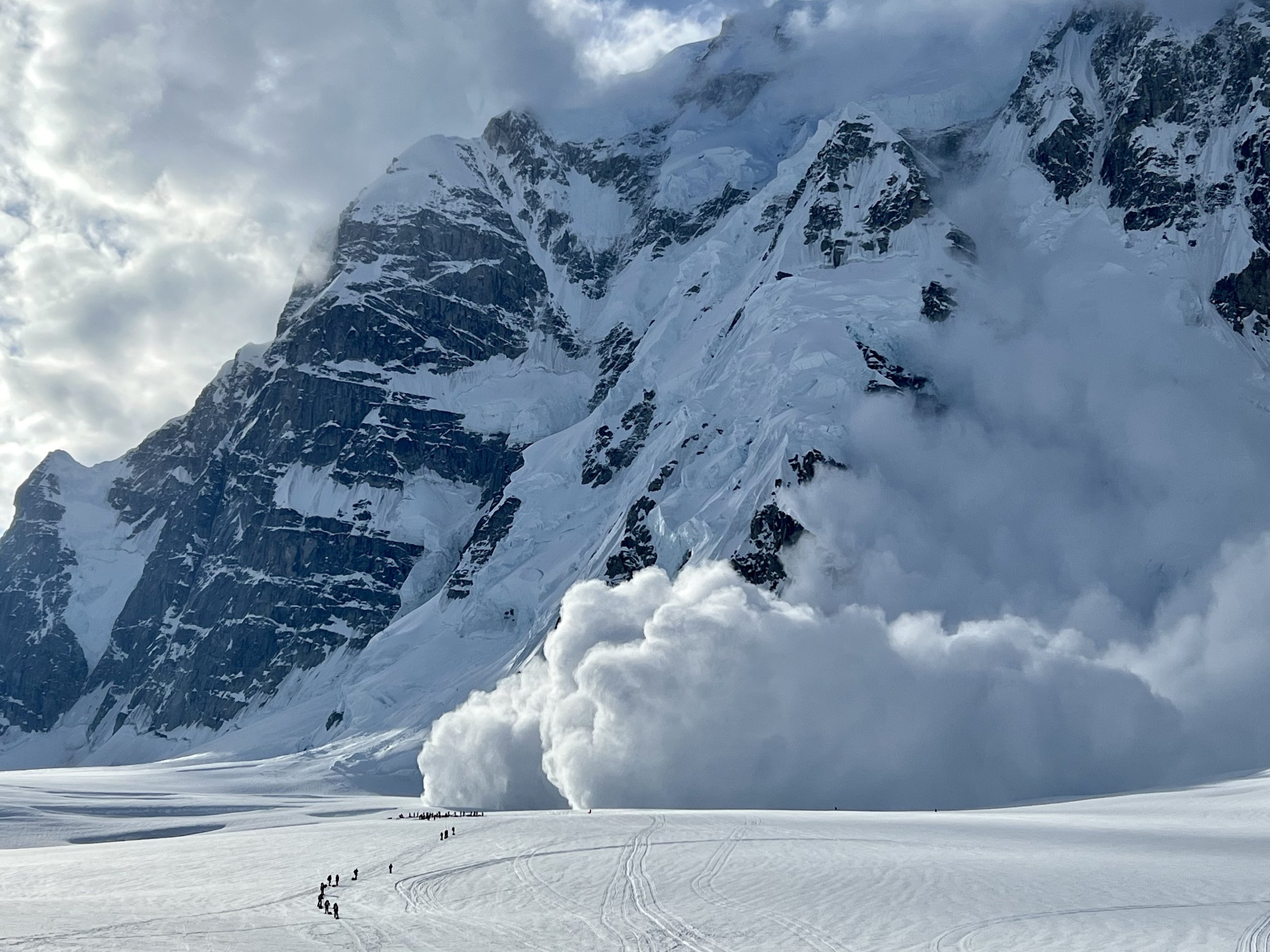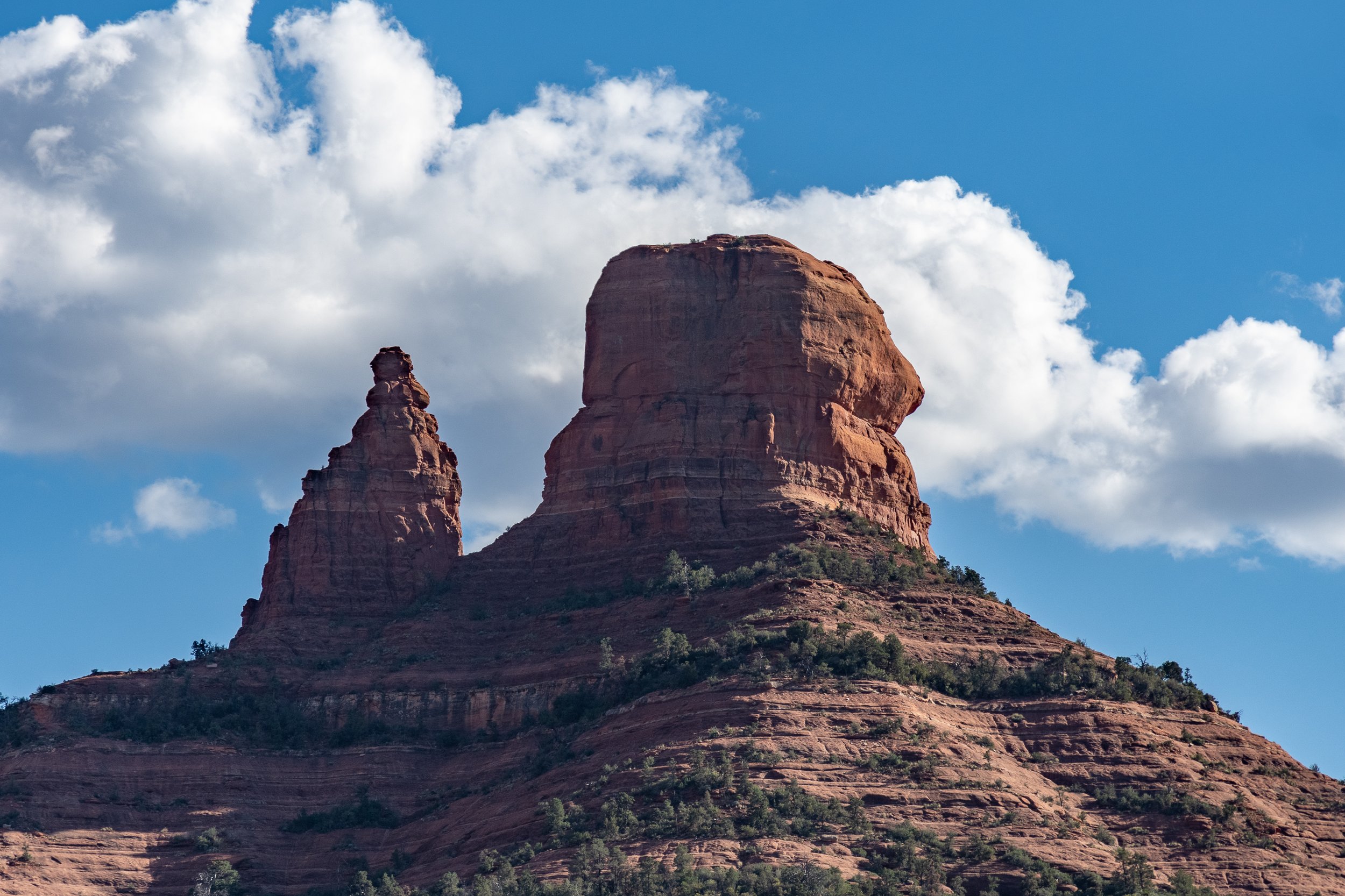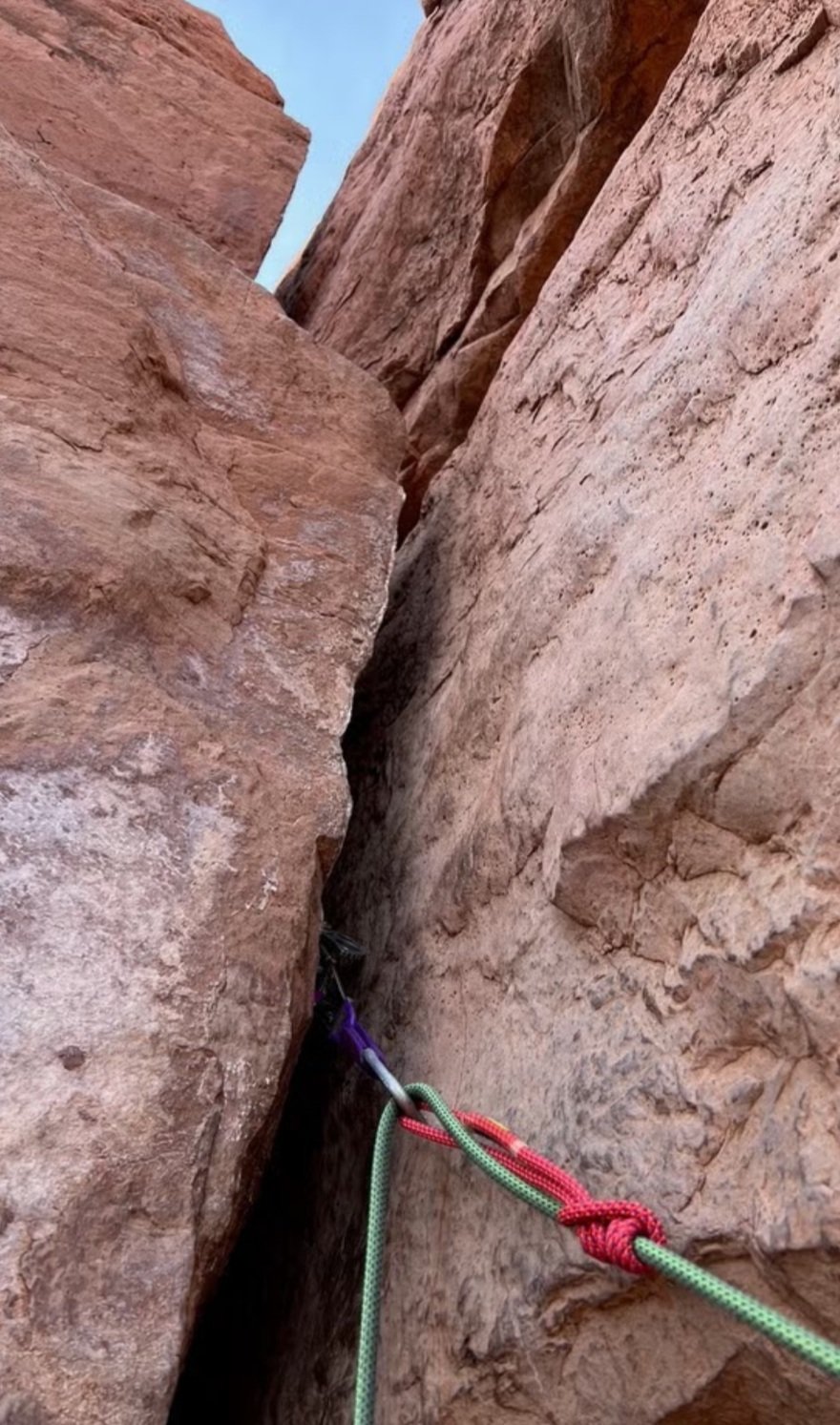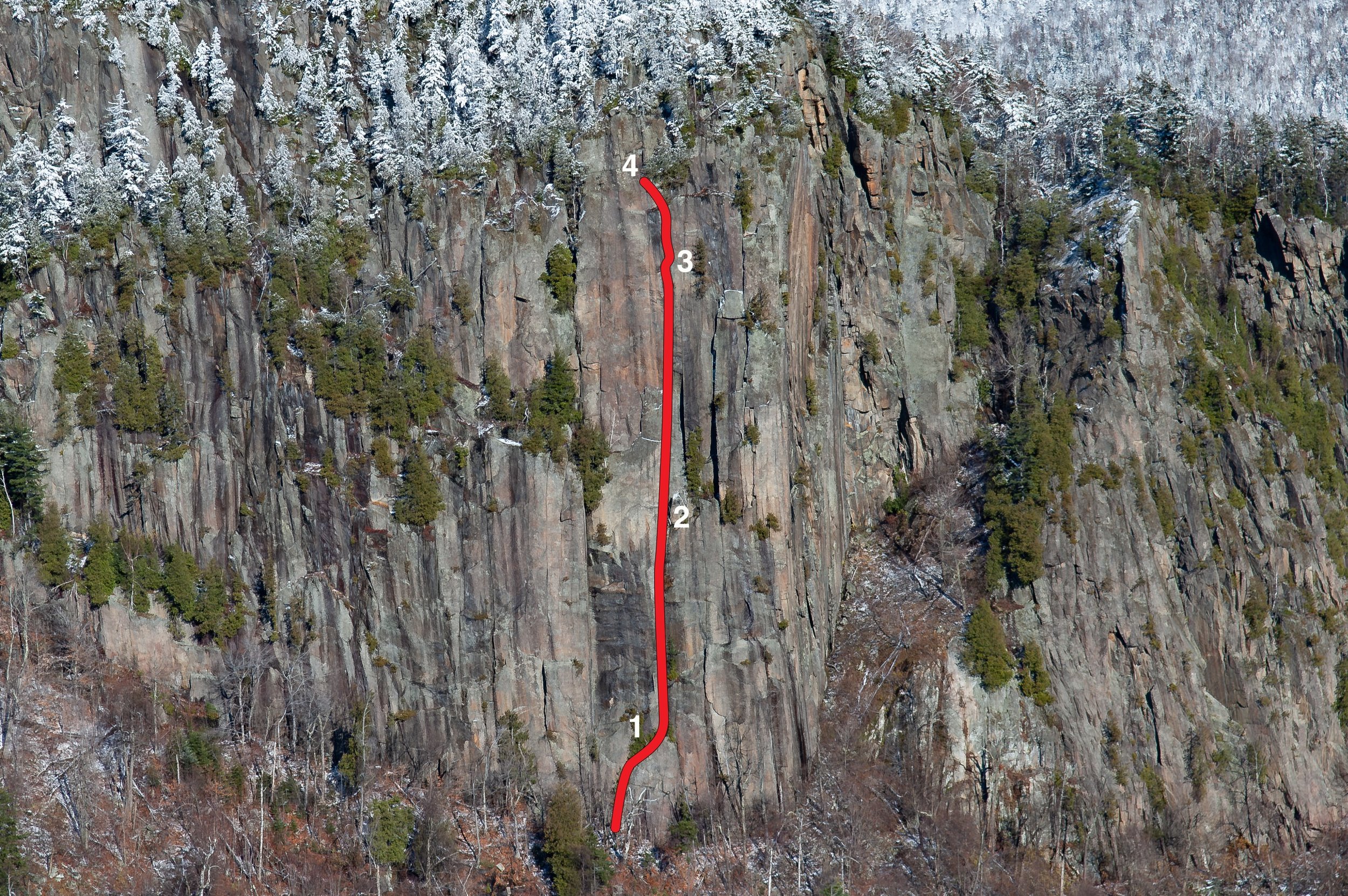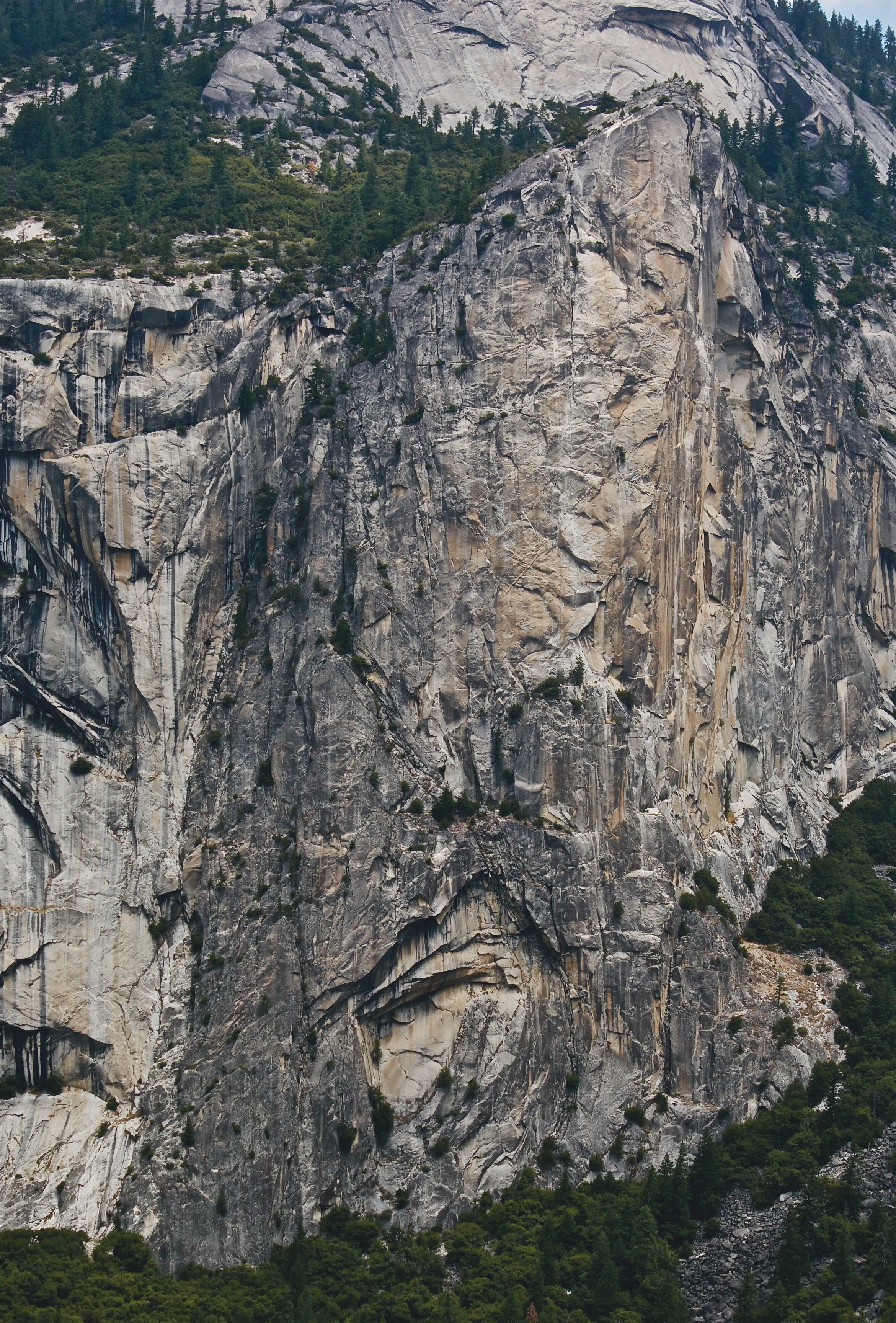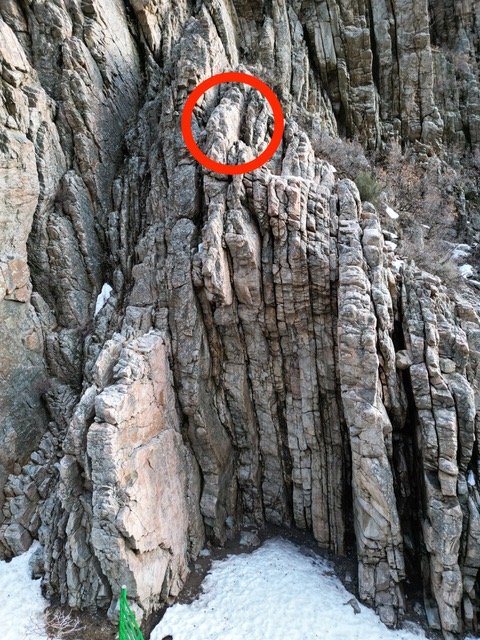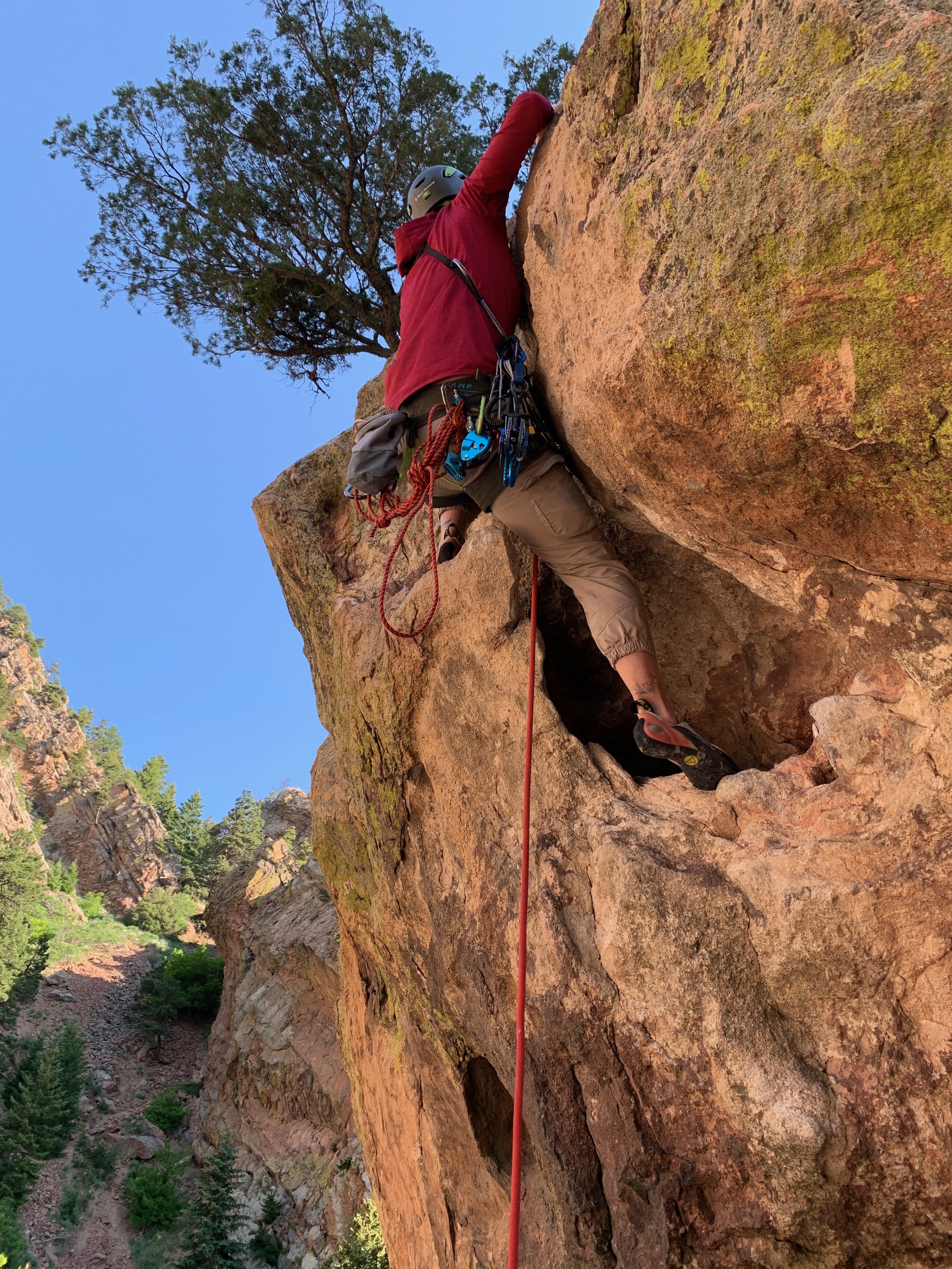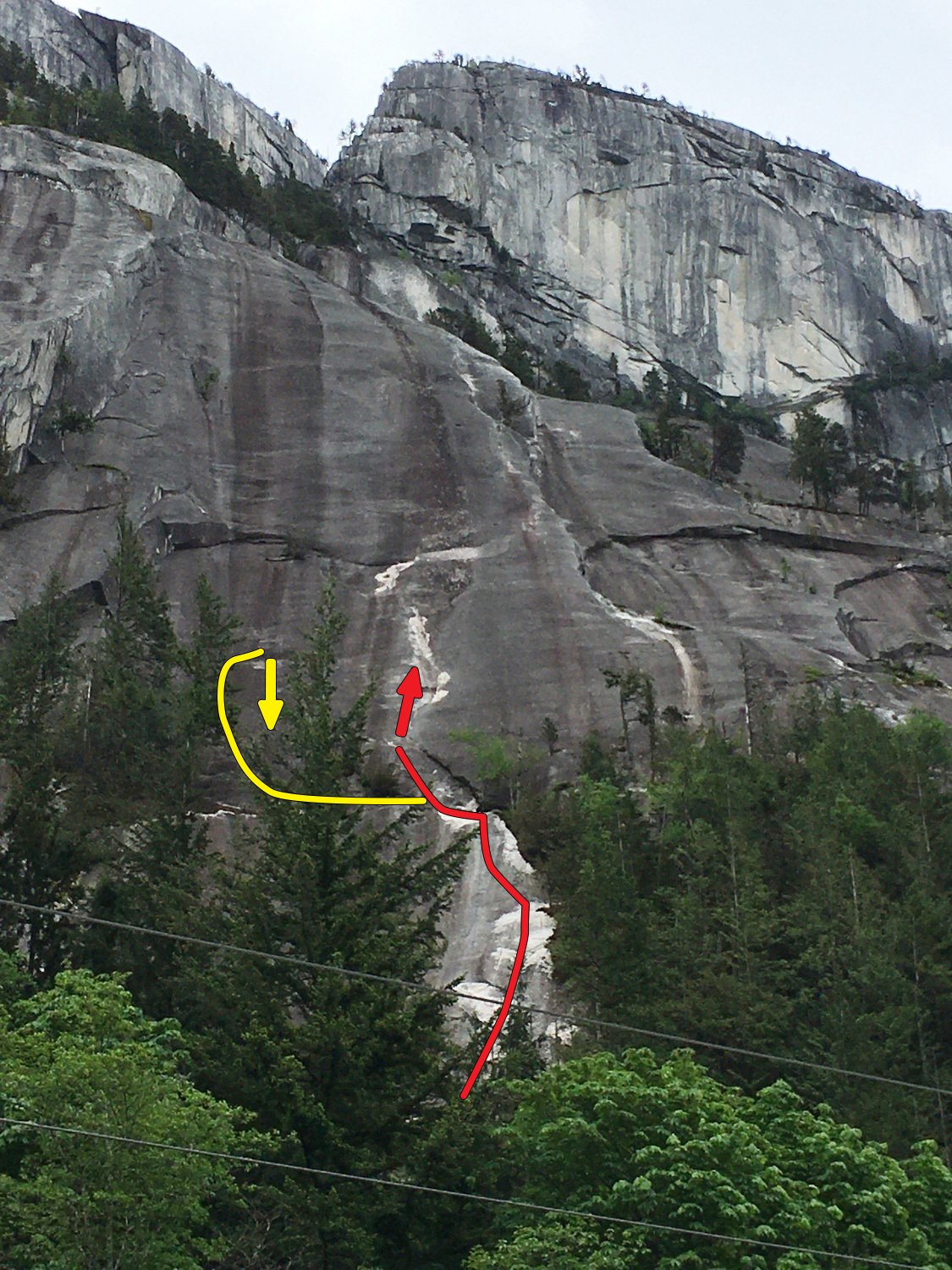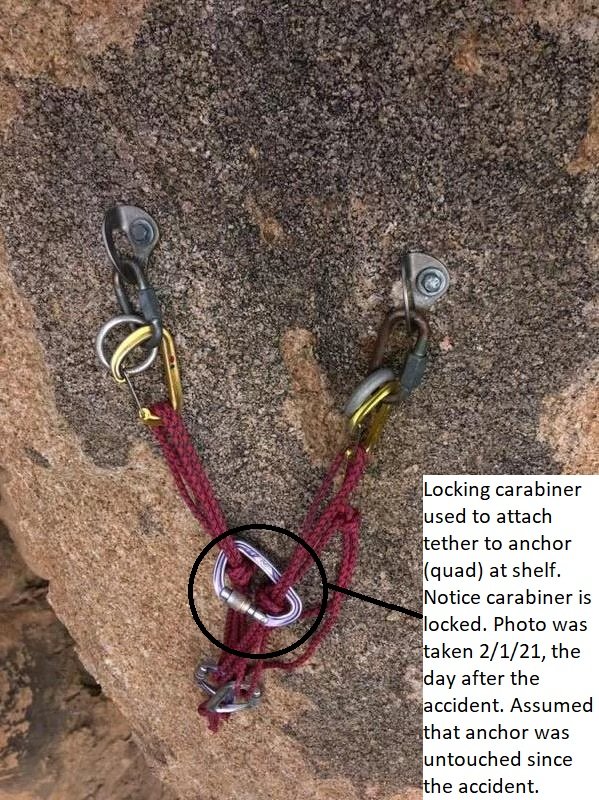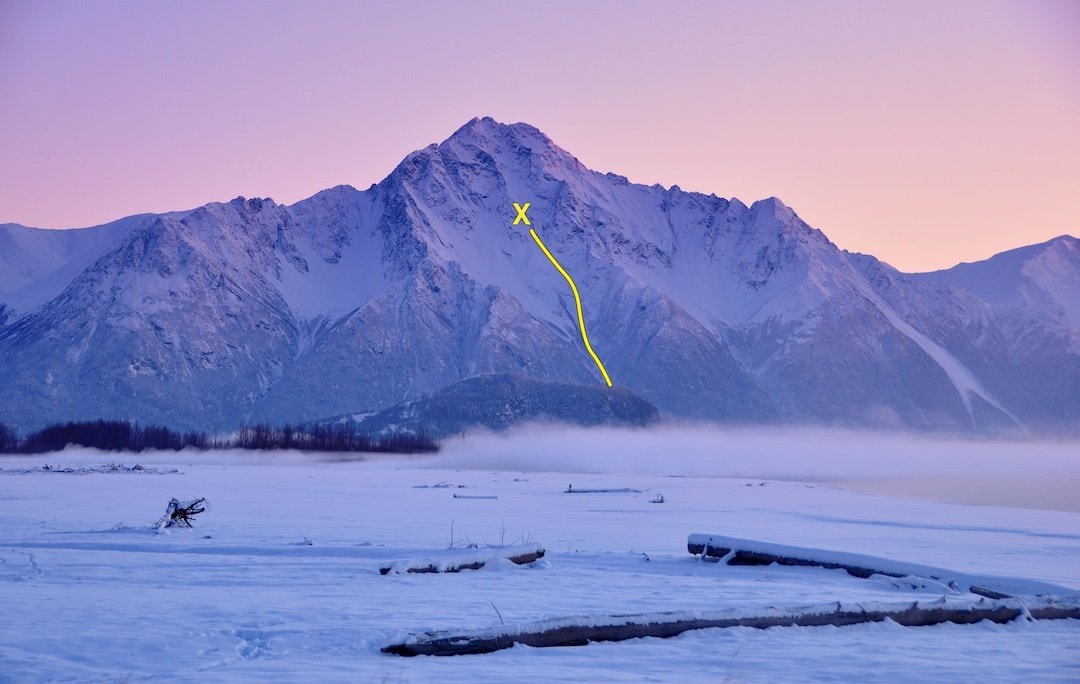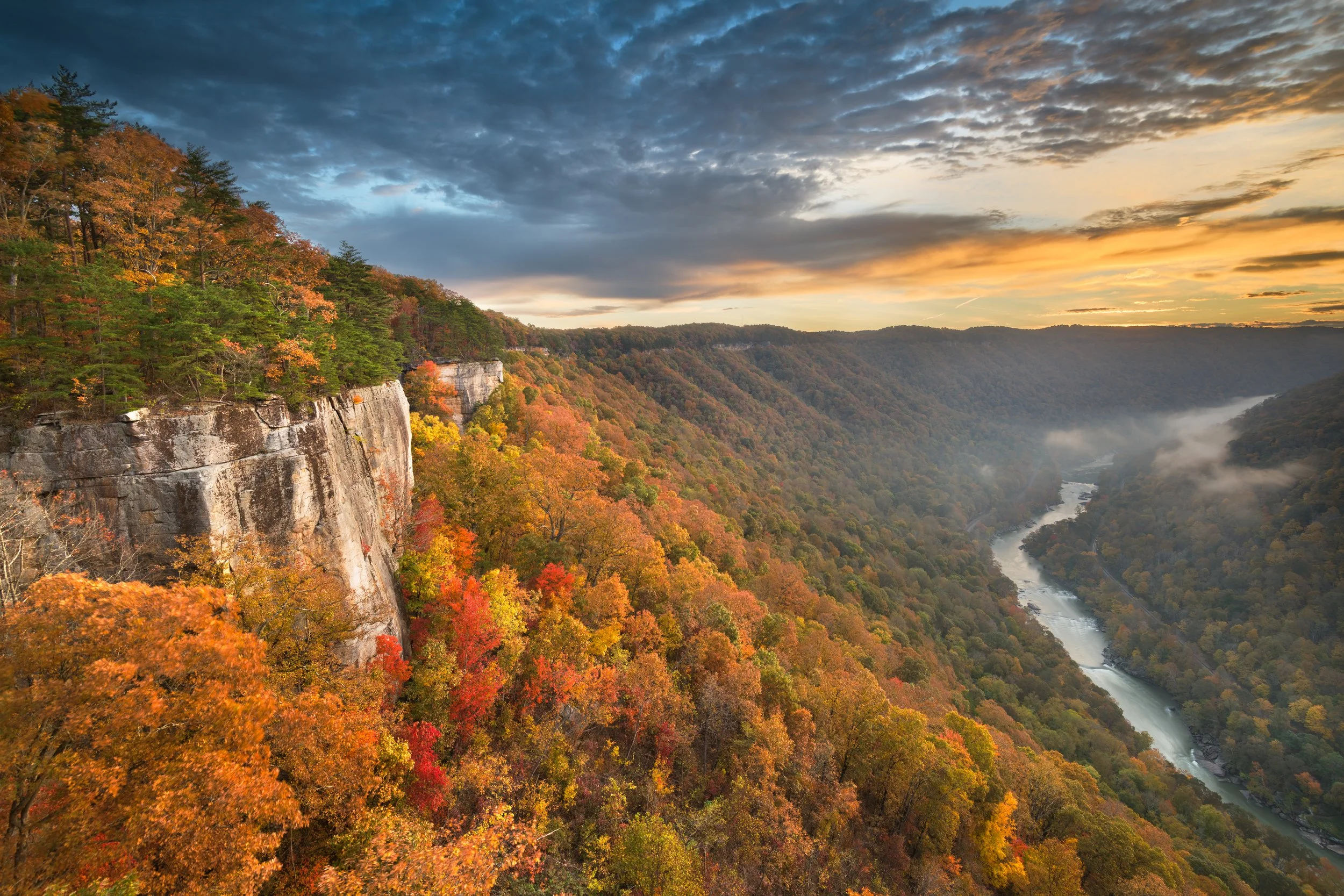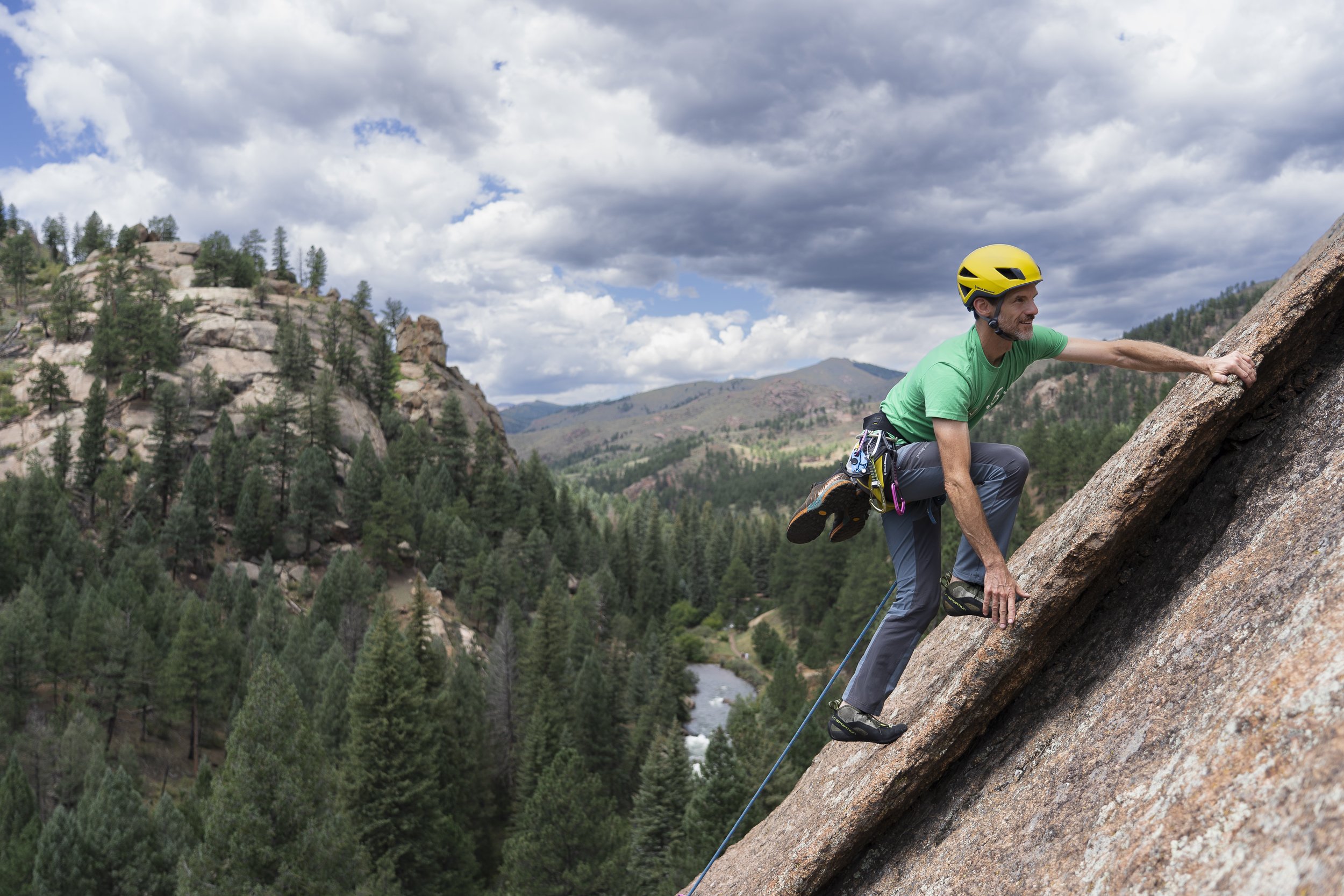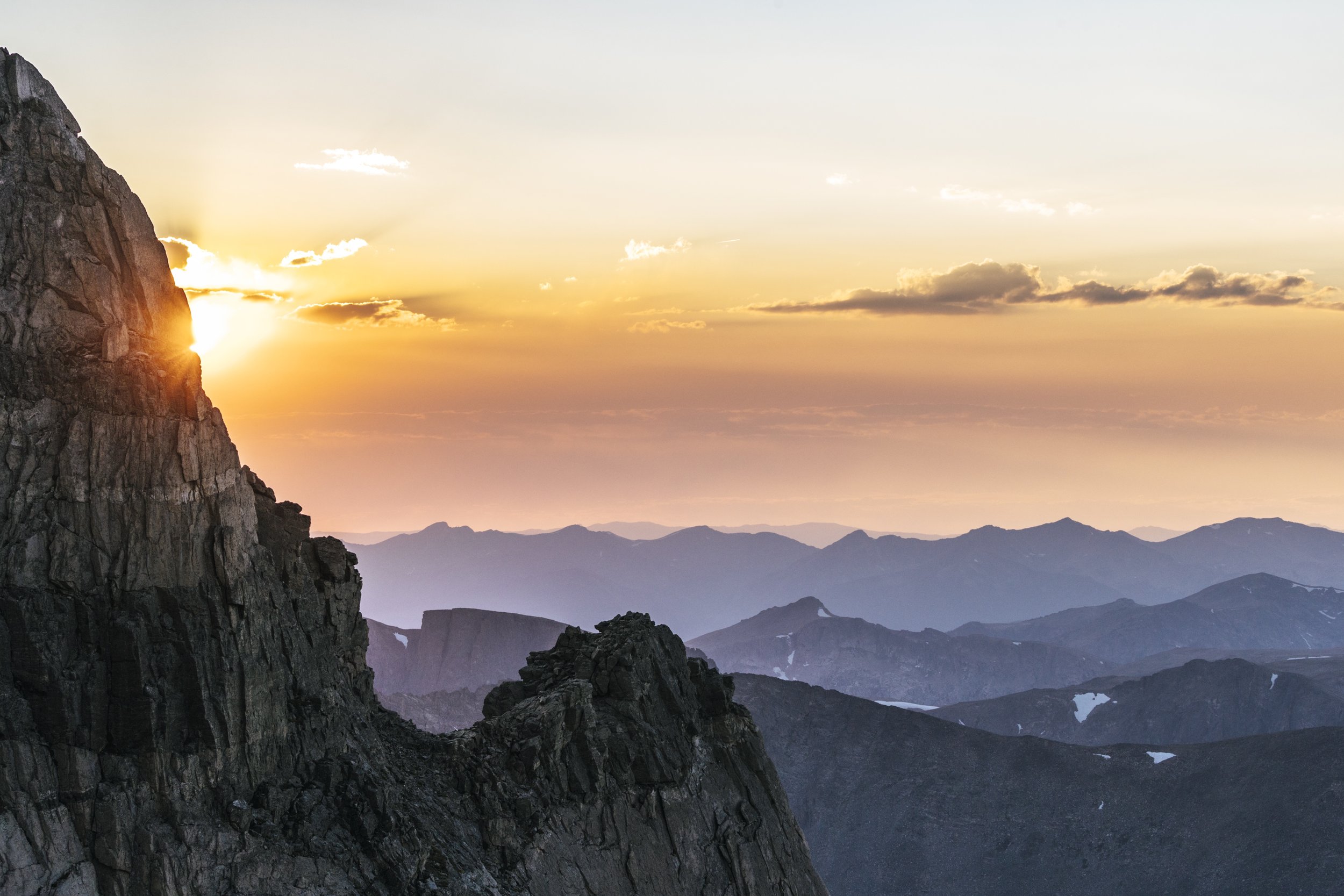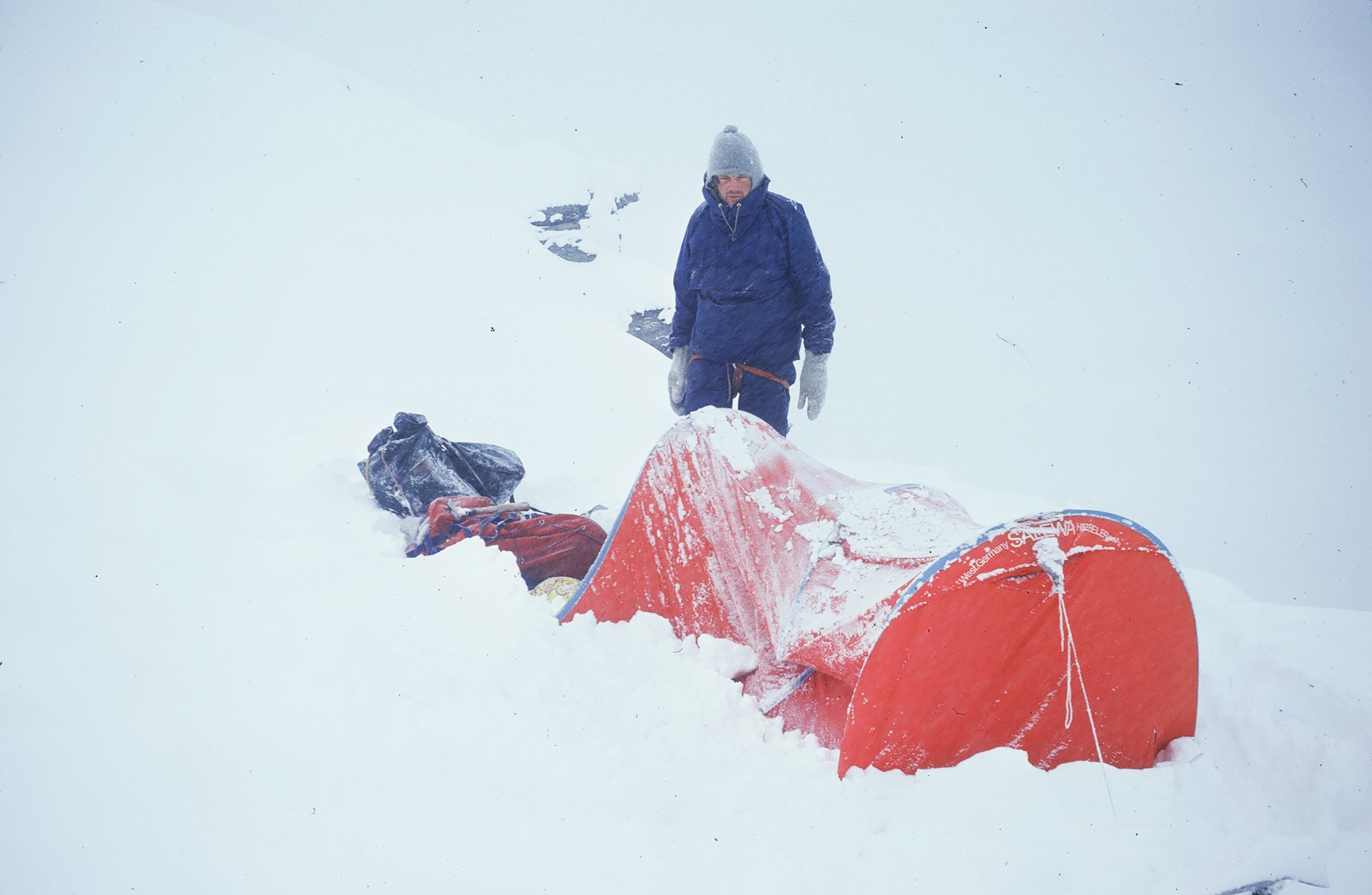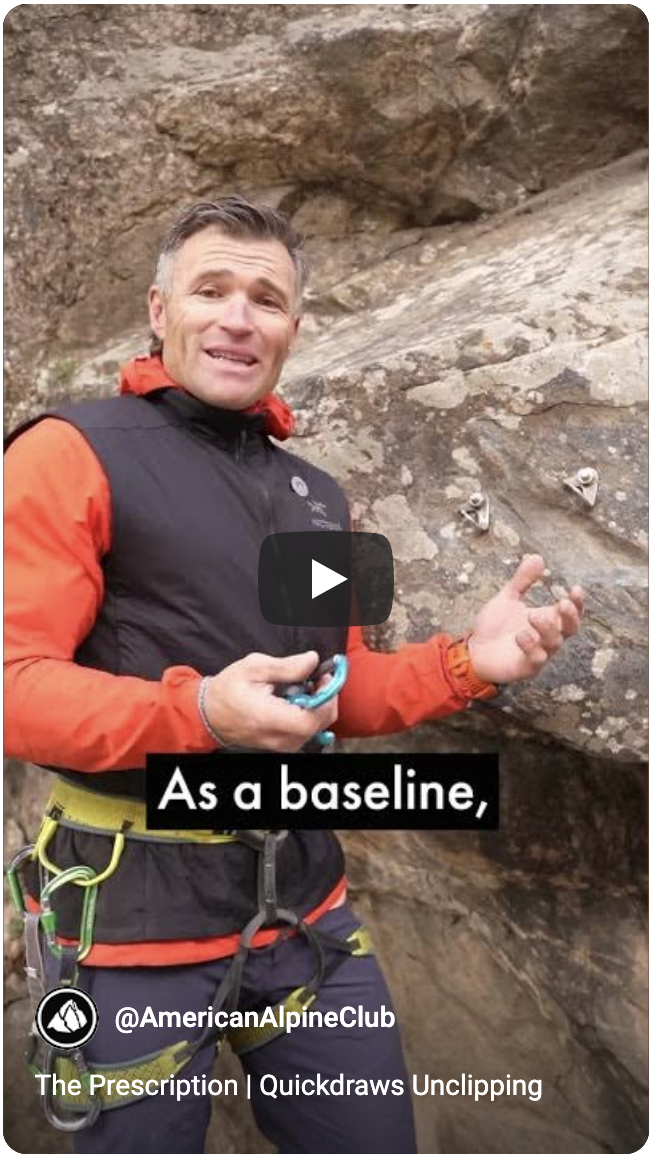The Naked Edge
By Hannah Provost
If you had to tell the story of the evolution of climbing within the history of one route, your most compelling choices might be The Nose of El Capitan or The Naked Edge in Eldorado Canyon. In this way, The Naked Edge is a time capsule containing within its memory: the much dreamed-of first ascent finally climbed by Layton Kor, Bob Culp, and Rick Horn; a period defining free ascent by Jim Erickson and Duncan Furgeson in the early 1970s; and one of the few battle- grounds for speed records in the United States. In 1962, Kor and Bob Culp were diverted attempting to aid the steep final edge, and today, climbers have speed climbed the route, bridge to bridge, in a little over 22 minutes. What is it about this climb that has allowed it to be the sketchbook for climbing legends to draw out the evolution of our sport? Anecdotes and artifacts from the American Alpine Club Library and archives provided the answer.
Perhaps it was all aesthetics—the compelling imagery of a climb that could divide dark- ness and light. Or maybe it was the fact that The Edge tends to rebuff many of its suitors. But whether The Naked Edge was dishing out a good humbling, or whether, as Jim Erickson famously argued, his free ascent style “humbled the climb” instead, The Naked Edge might live so prominently in our collective climbing memory because it encapsulates one of the great questions of each climbing endeavor. Who holds the power here? The climb or the climber?
At first, the route held all the cards. Layton Kor, known for his hulking height and wild, almost demonic, drive, could usually weaponize his determination and fearlessness to get through any hard climbing he might envision for himself. Yet when Layton Kor and Bob Culp attempted to aid the route in 1962, having each been turned away in 1961 on separate occasions, they still had to deviate from the original vision and finished the climb via a dihedral slightly to the left of the stunning final overhang. It wasn’t until Kor came back with Rick Horn in 1964 that The Edge, as we climb it today, was first done in its entirety.
Jim Erickson, a young gun with a knowing grin, hadn’t always been a hotshot. However, by the early 1970s, he had gotten into the habit of proving a point—freeing the old obscure aid lines in Eldo put up by Robbins, Kor, Dalke, and Ament the decade before. After several failed attempts to free The Naked Edge, repeatedly retreating from the first pitch finger crack due to a strict avoidance of hangdog- ging and rehearsing, freeing The Naked Edge was his foremost ambition.
By 1971, The Naked Edge had been ascended 30 or so times using direct aid. Erickson was envisioning a new phase of the route’s life. Yet his first moderately successful attempt, with prolific free climber Steve Wunsch, was yet another humbling. As he wrote for Climb!: The History of Rock Climbing in Colorado, the fourth pitch was daunting to the point of existential: “Steve dubs it impossible. I give it a disheartened try, but it is late so down we come, pondering the ultimate metaphysical questions: ‘Is there life after birth? Sex after death?’”
When Erickson and Duncan Ferguson returned a week later, things went a little more smoothly. Though The Naked Edge was the last major climb that the two would ascend using pitons, it wasn’t the use of pitons that haunted Erickson and sent him off on his staunch commitment to only onsight free -climbing. Rather, when Erickson reflects on the effort and technique of pitoncraft, and the incredible added effort of free climbing on pitons, he seems almost to be creating something, tinkering. Describing nailing the crux of the first thin pitch in an interview for the Legacy Series, a project of the AAC to preserve the history of climbing, Erickson painted a picture of immense toil: “You’re in this strenuous fingertip layback, with shoes that didn’t smear very well...You had to first of all figure out which piton you were going to place, you had to set it in the crack, you were doing all of this with one hand while you were hanging on. Then you had to tap the piton once to make sure you didn’t lose it... because if you missed it and dropped it you’re back to square one, so you had to tap the pin, finally hit it in, test it to see if it was good, then you’d clip a single free carabiner, and a second free carabiner into it, and then you would clip your rope in, all while you were hanging on with one hand in a bad finger lock.”
In the 1960s and 1970s, once a route was freed, it was not to be aided again. The rock had been sufficiently humbled, and all climbers seeking to prove their worth on that rock must level up their skills to prove themselves worthy.
Lynn Hill and Beth Bennett set out to capture an ascent of The Edge with filmmaker Bob Carmichael in 1981, who may have let the reputation of the climb leak into the produc- tion notes, asking the climbers to fall repeatedly on the first pitch and editing in a training mon- tage. Though the film claims to document the struggle of the first all-female ascent, Bennett reports: “the film with Lynn was a fictionalized account.” Bennett had already clinched the FFFA in 1977, and reports doing the first all-fe- male ascent with Louise Shepherd and Jean Dempsey (née Ruwitch) a year later. Similarly, Hill had become the first woman to climb 7c (5.12d) two years before, and was clearly stronger than the film suggests. Their humbling was played up for the sake of drama, and Hill wishes she could have properly attempted an onsight. In the case of this ascent, the humbling reputation of the climb dominated the narra- tive, obscuring the power the climbers’ held in that fight.
These days, news about The Naked Edge revolves around the potentially most hubristic
part of modern rock climbing: soloing and speed ascents. Speed ascents of this iconic route began in the early 1990s with Micheal Gilbert and Rob Slater. As the record dwin- dled, a friendly rivalry emerged between two teams consisting of Stefan Griebel and Jason Wells, and Brad Gobright and Scott Bennett. Before Gobright and Wells died in respective climbing accidents in Mexico and California, this friendly rivalry had pushed the record to 24 minutes and 29 seconds. New kids Ben Wilbur and John Ebers arrived on the scene in 2020 and, with just a few practice runs, cut down the record to 24 minutes and 14 sec- onds. In 2022, Griebel put on his racing shoes again and paired up with local Joe Kennedy, climbing The Naked Edge in 22 minutes and 44 seconds, bridge to bridge.
Griebel has climbed the route over 350 times. Sometimes pitched out and casual, some- times as reconnaissance missions, sometimes as three laps in three hours as he and Joe got closer to going for the Fastest Known Time. For these speed climbers, the route has become a “third place,” even more so than the climbing gym. Besides work and home, it has become the other, alternative place where one is social, makes connections, and refines one’s identity. Kennedy writes: “You could argue it’s a waste of time to climb it over and over, but doing so has led to some of the most meaningful friendships and climbing experiences I’ve had in my life. It has turned the route into a meeting place, a fitness test, a playground, and something so much more significant than just a rock climb.”
But even these modern masters of this stone can be humbled by the climb in their own way. Kennedy reflects: “I was totally humbled by the route when I first climbed it. It was much more difficult than I expected–thin, techy, pumpy, and slick. And when I don’t climb it for a while, I never fail to get more pumped than I thought, no matter how dialed my beta is.” Griebel is adamant the rock always does the humbling: “Sometimes it feels like the easiest one-pitch 5.9 warm-up in the canyon, and other days I mess up a crux sequence in the smallest way and suddenly get pumped and scared! The rock always does the humbling, not the other way around. I’ve seen 5.13 sport climbers fall out of the Bombay Chimney onto that 50-year-old pin!”
Reflecting today, Jim Erickson says his famous quote is often misunderstood. Indeed, he believes the style in which he and Furguson freed The Edge wasn’t the ethics he truly believed in—despite yo-yoing being an accepted practice at the time, he only ever truly felt satisfied by onsight climbing. But he also insists that he and his partners were hum- bled by the climb, too. In contrast to Griebel, Kennedy, and others, Erickson has never gotten back on The Naked Edge after his his- tory-making ascent. It was such a special experience that he worried that climbing it again would destroy the myth of it. Still, he can remember nearly every piece of beta, each pound of the hammer required to secure each piton.
Climbing it only once, Erickson is still torn by the question of humility. Climbing it hundreds of times, Griebel has yet to come any closer to finding the answer. So, who is doing the humbling? Perhaps, the fact that the answer is so elusive is why the pursuit of the question remains so satisfying.

